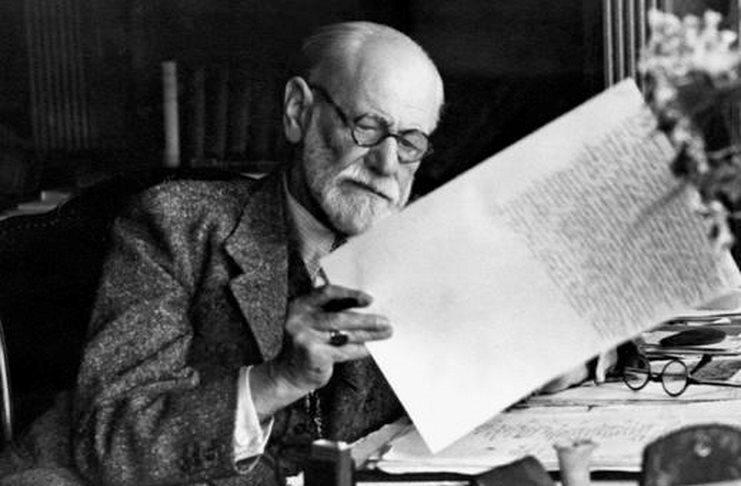How Does Your Client Think? Use Psychology to Sell!

To sell a lot you need to understand your client. Let’s analyze consumer’s behavior step by step and find out what makes the ad efficient.
2 models of consumer buying decision:
That’s how consumer thinks if he is familiar with the product:
1) realizing the problem
2) searching for information
3) considering options
4) making a decision
5) response on purchase
If you ever bought a car or even a mobile phone, then you’re familiar with the algorithm. It fits almost any kind of product. In that case buyer will get advertisement from step one to step four.
“Realizing the problem” step became very easy to track in digital advertising. User only needs to type “buy laptop” in Google to receive plenty of offers from all kinds of dealers and shops. Potential customer will be seeing images of laptops on every page for about a month before either customer or advertisers give up.
There’s a different pattern if consumer is unfamiliar with the product:
- Recognition. Consumer sees the new product but lacks the information about it;
- Interest. Consumer is looking for information about new product;
- Evaluation. Consumer decides necessity of buying new product;
- Test. Consumer gets familiar with new product and inform the opinion about it;
- Acceptance. Consumer decides to buy new product.
Simple as that.
Decision-making time:
Here’s an example: you and your child having a walk in a hot day. You’re passing ice cream shop. There’s a big chance you’ll buy it, even though you haven’t planned it before leaving your house.
Everybody has a psychological barrier for certain sums and types of products. 99% of people can’t afford a car or a house while having a walk in the mall. Larger the sum, longer we think. Of course rates vary depending on complexity of product and wealth of consumer. Advertising network AdNow.com recommend their users to rely on numbers below:
- Price less than $100 — instant decision
- Price less than $1000–3–7 days
- Price less than $30 000 — month and more
- Price more than $30 000 — more than 3 months
How to use it in native advertising?
90% of native ads on the market is “discovery”. Why?
Another example. Your potential client is reading an article about Katy Perry’s dogs. You got lucky to have his attention right before he goes to the article about benefits of nuts diet. What chances do you have to sell him new Audi at that particular moment? Sadly, none. But you still can intrigue him with something he never saw before.
Obviously, we’re talking about second type of decision-making pattern. New products easily attract attention of a consumer, but here lies another problem. After amazed consumers leaves your site they rarely return. They must make a decision in their first visit or we will lose them forever. We need impulse purchase.
According to AdNow.com network, product advertisement has 73% of all clicks. And highest conversion rate belongs to merchandise with price below $100. As of 2016, 75% of merchandise offers in AdNow.com is priced below $100.
“Impulse purchase” generation:
We have only one chance to capture consumers’ attention and lead them to our landing page. Then we have just 1–2 minutes to convince them, that our product is the best way to solve their problem. If we fail, we lose opportunity to sell anything to this particular client and go back to square one.
If you want to succeed, your ad and landing page must answer 4 questions of the consumer. Here they are:
- Interest. Your product is something revolutionary new. Wow-effect.
- Usefulness. You product solves some urgent problem your client has. If client doesn’t realize importance of this problem, help him see it in all its diabolical glory.
- Trust. Your product is so incredibly popular, that it’s a shame to live without it.
- Motivation to buy it right now. Discounts and bonuses.
Trust is extremely important matter, which is ignored by most advertisers.Let’s find out why it’s so crucial.
Psychological types of the consumers:
There are two types of people: innovators and conservatives. Diffusion of innovations has Gaussian distribution:

Majority of consumers treats new products with suspicion. You need to convince them that your product is already popular, even if it just hit the market. If you could do that, you get the biggest social section of 82% as your potential customers. Ability to inspire trust is vital.
Overall:
Keeping in mind everything we just learned, let’s make a list of conditions for a perfect native advertising campaign:
- New product, unfamiliar to consumer
- Price below $100
- Product, not a service
- Publishers are appropriate to your product
- Landing page inspire trust
There’s a lot of secrets to efficiency for every step of the list and we will discuss them in future articles. As for now, check what message your creatives send and make sure your campaign meet every condition from the list. Good luck with advertizing!


